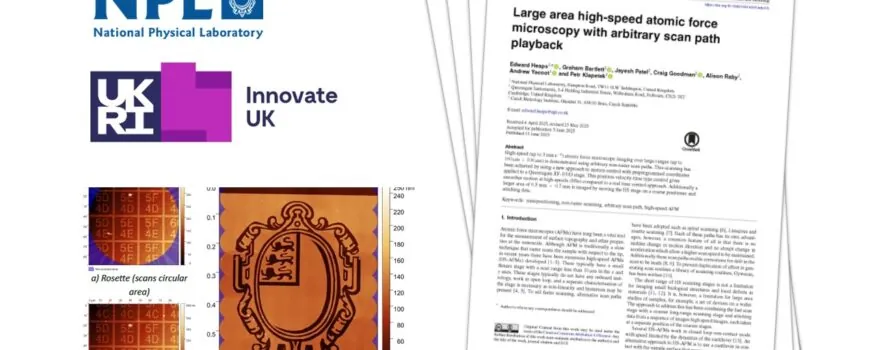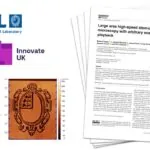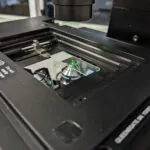
Queensgate and the UK’s National Physical Laboratory (NPL) have developed a novel control system to enable large-area, high-speed atomic force microscopy (AFM) scans. The breakthrough was enabled following their collaboration on an Innovate UK Analysis for Innovation (A4I) project.
AFM is an advanced microscopy technique that produces images by measuring the forces between a sharp tip and the sample surface. It generates high-resolution images with atomic-scale detail, and has applications in biotechnology, materials science, and semiconductor manufacturing.
Traditionally, AFM is a slow imaging technique, although in recent years, some high-speed AFMs have been developed. The limitation of these high-speed AFMs is the scan range: normally less than 10 µm in the X and Y axes.
Queensgate has helped scientists at NPL’s Dimensional Metrology Group achieve high-speed (up to 3 mm s-1) atomic force microscopy over large ranges—up to 100 µm x 100 µm.
It has been achieved using a new approach to motion control with pre-programmed coordinates applied to a Queensgate NPS-XY-100D nanopositioning stage.
This position-velocity-time type control gives smoother motion at high speeds compared to a real-time control approach. By moving the stage on a coarse positioner and stitching data, larger areas up to 0.5 mm x 0.7 mm can be imaged.
The paper is available for open-access download from IOP Science:
Large area high-speed atomic force microscopy with arbitrary scan path playback






